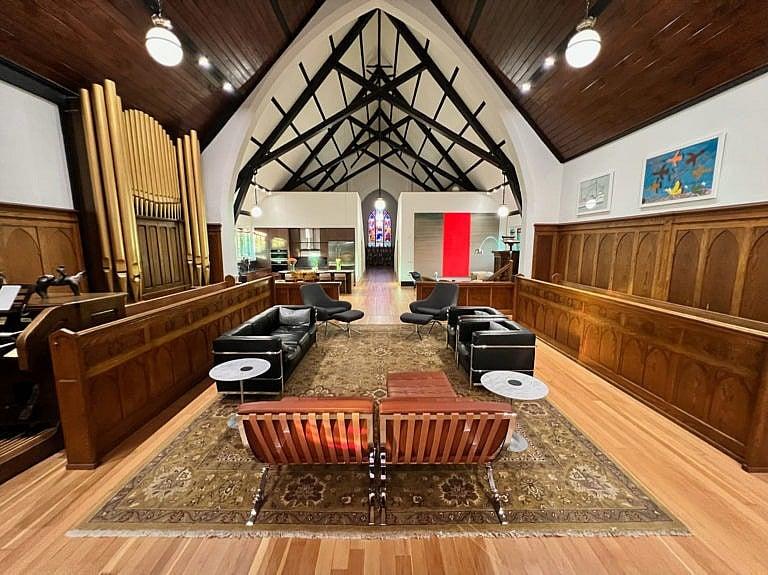A Winnipeg couple converted this historic church into apartments
The St. Philips church could have been demolished. Instead, it remains a community hub.

Share

Stephen and Hazel Borys have deep roots in Winnipeg: he’s the CEO of the Winnipeg Art Gallery-Qaumajuq and she’s the city’s director of planning property and development. For months, while driving to Stephen’s brother’s house, they’d pass by St. Philips Church and Memorial Hall, which stood abandoned a block away. One day in December of 2021, the couple found out that the church had been put up for sale and immediately leapt into action. It wasn’t the first time they’ve restored an urban fixture: over the course of their 20-year marriage, they’ve taken on many adaptive reuse projects, helped along by Hazel’s background in urban planning. They knew the building could be demolished if it fell into the wrong hands. Instead, they wanted to give the church a new life by converting it into housing.

READ: This church-turned-house in small-town Ontario has a thoroughly modern interior

The late Gothic Revival–style Anglican church, located in Winnipeg’s St. Boniface neighbourhood, dates back to 1904. For more than a century, it doubled as a place of worship and a place for community activities, like Girl Guides, Cub Scouts and dance lessons. The church closed its doors during the pandemic due to dwindling membership. But, as Stephen spoke with neighbourhood residents about the possibility of a conversion project, it was obvious that people wanted to continue visiting the space. “Regardless of these people’s backgrounds, their religious affiliation or cultural disposition, they all saw this property as part of the community,” he said.

Stephen and Hazel purchased the building in March of last year, but they couldn’t start renovations right away. Despite a vote of confidence from the neighbourhood, the couple were facing heaps of red tape. They wanted to fill the building with six rental units without changing the church’s footprint or facade, but they needed to apply for multiple zoning exceptions to do so. The process required six months, which slowed the project down.

READ: An Ontario couple converted this 130-year-old church into a charming family home

After they received permit approvals from the city, they began work on the project. Some days, as Stephen worked on the garden in front of the church, neighbourhood residents offered words of gratitude; one past parishioner frequently stopped by to look at the renovation’s progress. Hazel says that one of the current renters decided to move in because St. Philips played a huge part in her family’s lives while she was growing up. Her brother even got married in the church.

Construction on the six rental units finished this year. Stephen and Hazel replaced old furnaces with high-efficiency heat pumps and installed energy-efficient appliances, while also preserving key historical elements of the church. The facade and the footprint of the building are original, and the units feature stained glass windows that pay tribute to members of the congregation who fought in the world wars. They also feature historically significant pieces of furniture, such as bishop’s chairs and the pulpit, plus large pendant lights that once hung from the church’s high ceilings.

Stephen and Hazel have moved into one of the units, and they’ve leased out the other five. To the Borys, the project is a tiny contribution toward fixing a nationwide housing crisis, and it helps that the onetime church remains a hub for community activity: the building still hosts in-house music events that welcome community members, featuring acts such as the Little Opera Company, a Winnipeg-based chamber opera company.